Marketing has evolved dramatically over the years. Billboards, TV ads, and newspapers once dominated the scene. Now, social media, search engines, and influencer campaigns are leading the way. But which approach is better?
Table of Contents
Is traditional marketing outdated, or does it still hold value? Can digital marketing alone drive sustainable growth? In this guide, we’ll break down traditional marketing vs digital marketing, including the key differences, strengths, and weaknesses of both, so you can decide which strategy works best for your business.
Understanding Traditional Marketing

Traditional marketing promotes products without the Internet. It includes newspapers, magazines, radio, TV, and billboards. These methods have been used for years to reach a wide audience.
One big strength of conventional marketing is its lasting impact. A TV ad or a billboard can stay in people’s minds for a long time. It also reaches people who don’t use the internet, like older adults who prefer TV or newspapers.
However, traditional marketing can be expensive and hard to measure. Businesses can’t always track how well a newspaper ad or TV commercial works. Still, it’s a useful strategy for reaching local or broad audiences.
It is all about reaching people without the internet. It includes things like:
- TV ads: Commercials during shows or movies.
- Newspapers and magazines: Ads in printed papers or magazines.
- Radio ads: Ads played on the radio.
- Billboards: Big signs on the road or in public places.
Why It Works:
- It’s familiar and has been around for a long time.
- It can leave a strong impression. For example, a funny TV ad or a catchy billboard can stick in your mind.
- It reaches people who aren’t online much, like older adults.
Challenges:
- It can be expensive. A TV ad or a billboard costs a lot of money.
- It’s hard to measure. Businesses can’t always tell how many people bought something because of a newspaper ad.
Various Forms of Traditional Marketing
1. Print Advertising (Newspapers and Magazines)

Print ads in newspapers and magazines help businesses reach the right people. Local businesses use newspaper ads to target customers nearby. Big brands like Vogue use magazine ads to show luxury fashion. For example, McDonald’s puts ads in newspapers to promote breakfast deals for people going to work in the morning.
2. Television Advertising
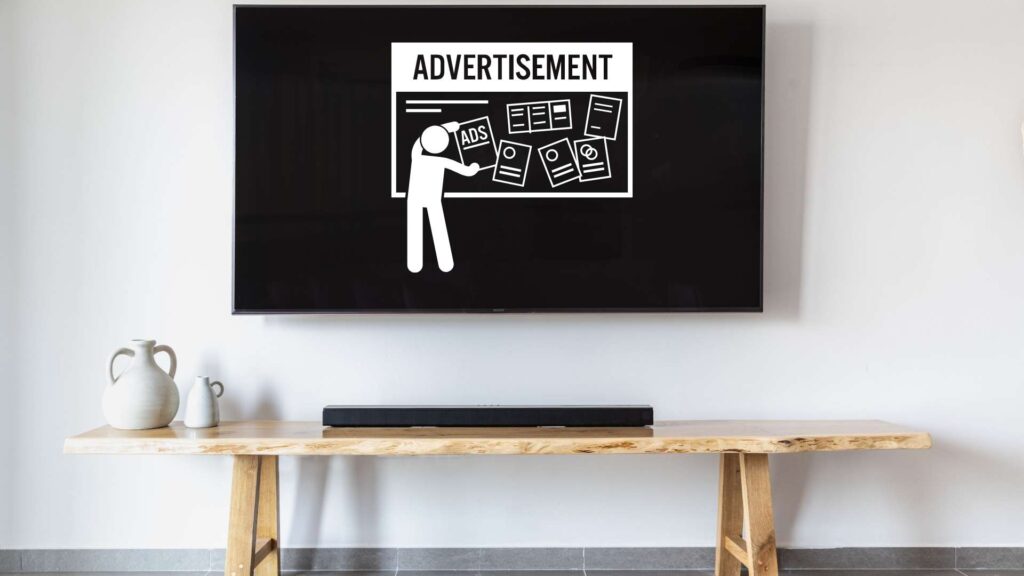
TV ads are seen by millions of people and are very memorable. For example, Fevicol’s funny and creative ads on Indian TV have made the brand famous for strong glue. Surf Excel’s “Daag Acche Hain” campaign uses stories in their ads to connect with families emotionally.
Also read: 6 Remarkable Marketing lessons from FRIENDS TV Show
3. Radio Advertising
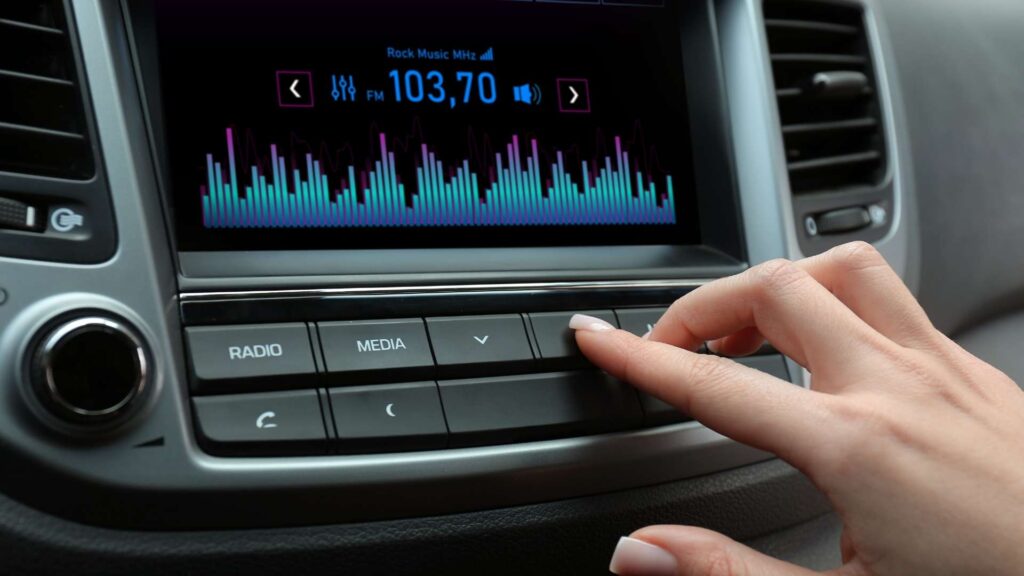
Radio ads let businesses target specific groups of people based on the station’s listeners. Many people listen to the radio while driving or working, so it’s a good way to grab their attention. Businesses pick stations that match their audience’s interests. For example, Big Bazaar uses catchy jingles on Radio Mirchi 98.3 FM to promote festival sales.
4. Outdoor Advertising (Billboards and Banners)
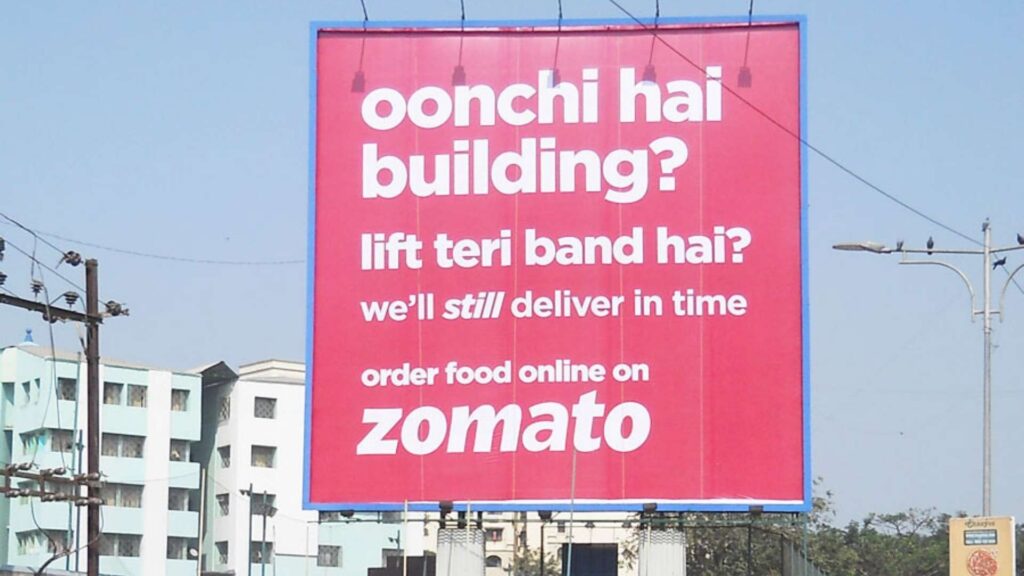
Billboards, posters, and ads on buses or trains are placed in busy areas to catch people’s eyes. A good billboard can leave a strong impression on people passing by. Big brands like fast-food chains, real estate companies, and car brands use outdoor ads to stay visible. For example, Zomato uses funny billboards with clever lines in cities like Bangalore and Mumbai. These ads often get shared on social media.
5. Direct Mail Marketing
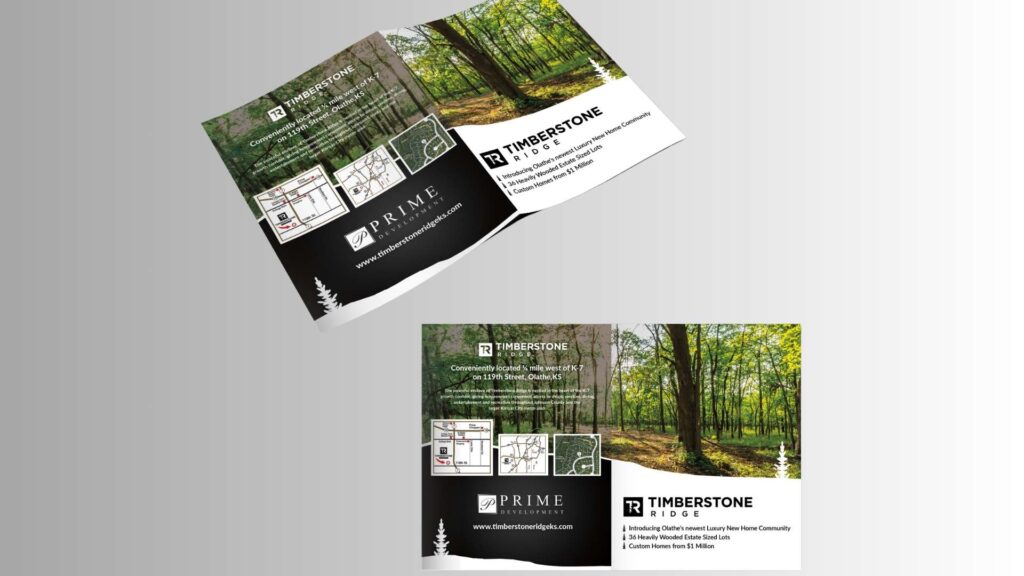
This means sending brochures, postcards, or catalogs directly to people’s homes. It helps businesses share detailed information about their products. While not as popular now, it still works well for industries like real estate or luxury brands, where personal communication matters.
Defining Digital Marketing
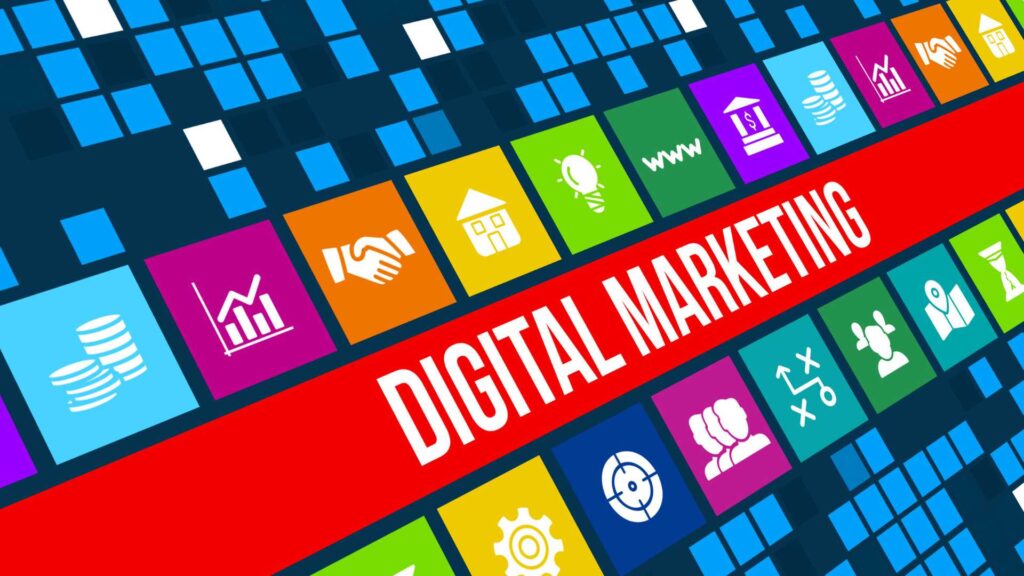
Digital marketing promotes products and services online. It uses social media, search engines, and email to connect with customers. Unlike traditional marketing, digital marketing lets businesses track results and talk to their audience in real time.
One big advantage is cost. Companies can launch with minimal funds and expand as their business grows. Another benefit is targeting. Companies can show ads to specific groups based on age, interests, or online behavior. This makes sure the right people see the ads.
Digital marketing also gives clear results. With tools like analytics, businesses can track website visits, ad performance, and customer actions. This helps them improve their campaigns. Today, businesses of all sizes use digital marketing to grow their brand and reach more customers.
Digital marketing is all about reaching people online. It includes things like:
- Social media ads: Ads on Facebook, Instagram, or TikTok.
- Search engine ads: Ads that pop up when you search on Google.
- Email marketing: Sending emails to customers about deals or new products.
- Website ads: Ads on websites or blogs.
Why It Works:
- It’s cheaper than traditional marketing. Businesses can start with a small budget.
- It’s easy to target specific people. For example, you can show ads only to women aged 25-30 who like sports.
- It’s easy to track. Businesses can see how many people clicked on an ad or bought something.
Challenges:
- It can feel overwhelming because there are so many online platforms.
- People might ignore online ads or block them.
Different Types of Digital Marketing
1. Social Media Marketing
Businesses use platforms like Facebook, Instagram, Twitter, and LinkedIn to talk to their audience. They post updates, run ads, and reply to comments. For example, Swiggy uses Twitter to run fun campaigns like #SwiggyVoiceofHunger. Nykaa uses Instagram to share beauty tips and new products.
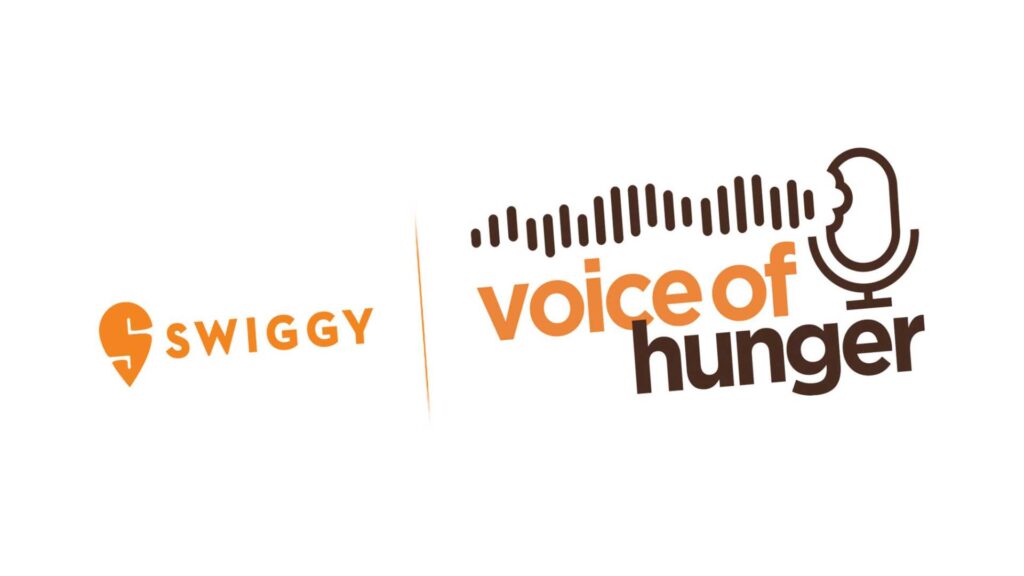
Also read: Scope of Social Media Marketing
2. Search Engine Optimization (SEO)
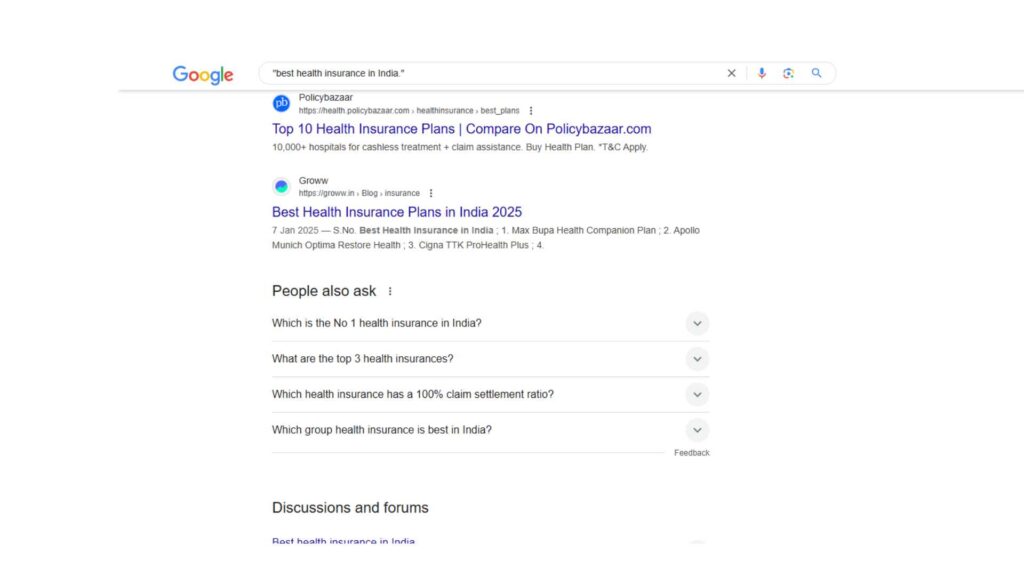
SEO helps websites show up higher on Google. Businesses use various kinds of keywords, good content, and links from other sites to improve their ranking. For example, PolicyBazaar uses SEO to appear when people search for “best health insurance in India.”
3. Email Marketing
Businesses send emails to their customers with updates, offers, and news. It’s a cheap way to stay connected. Flipkart uses emails to tell users about big sales like The Big Billion Days.
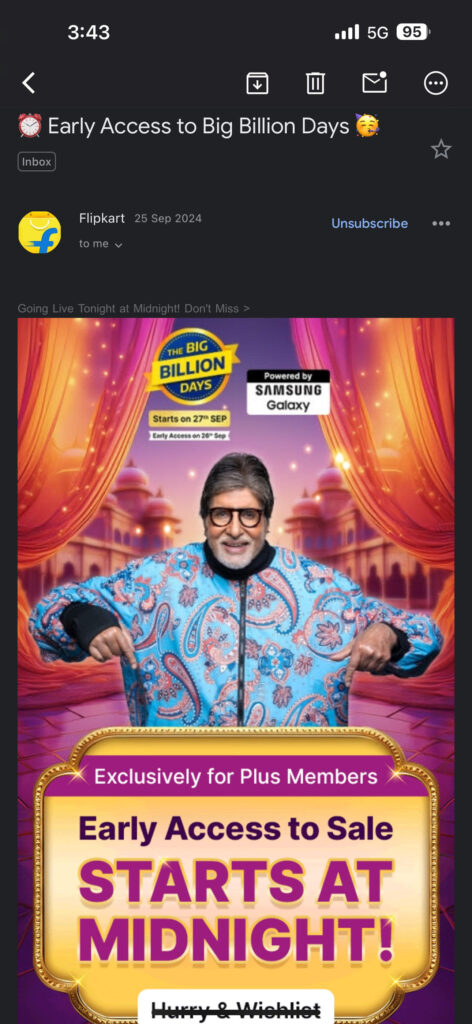
Also read: 20 Types of Email Marketing Every Marketer Must Know
4. Pay-Per-Click Advertising (PPC)
PPC lets businesses pay for ads on Google or social media. They only pay when someone clicks the ad. For example, Oven Story uses Google Ads to show up when people search for “pizza delivery near me.”
5. Content Marketing
By using content marketing, businesses create helpful content like blogs, videos, or eBooks to teach and attract customers. It builds trust. For example, Zerodha’s Varsity offers free stock market lessons, making them a trusted name in finance.
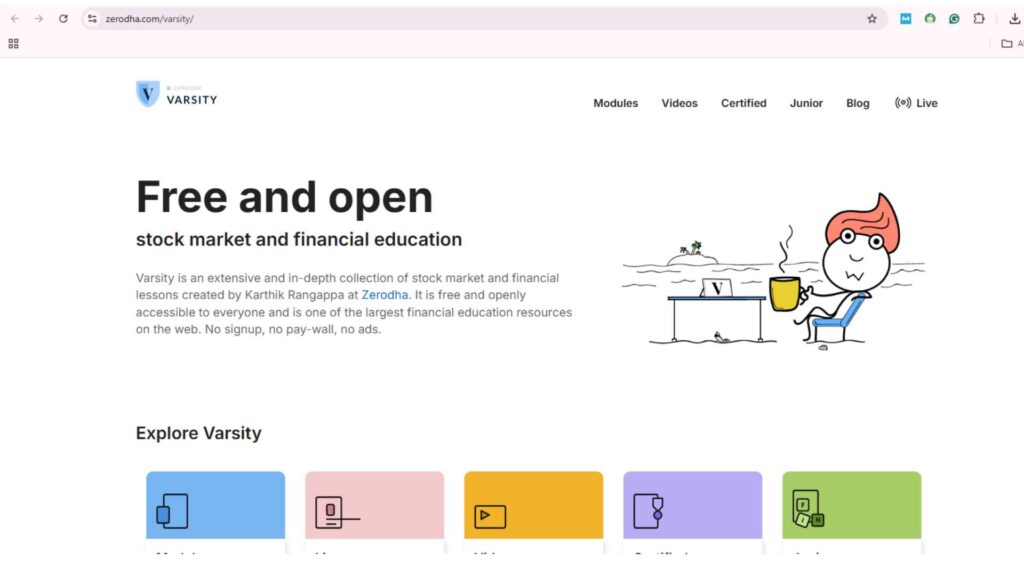
6. Influencer Marketing
Businesses work with popular online personalities to promote their products. People trust influencers and content creators they follow. For example, Nykaa works with Kusha Kapila to promote products in a fun way.

Traditional Marketing vs Digital Marketing
| Aspect | Traditional Marketing | Digital Marketing |
| Definition | Uses offline methods like newspapers, TV, radio, and billboards to promote products and services. | Uses online platforms like websites, social media, emails, and search engines to reach customers. |
| Mediums Used | Newspapers, magazines, flyers, TV, radio, and billboards. | Websites, social media, email, Google Ads, and blogs. |
| Audience Targeting | Targets a wide audience but lacks precision. A newspaper ad is seen by everyone, even if they are not interested. | Targets specific groups based on interests, age, location, and behavior. Facebook Ads allow businesses to reach the right audience. |
| Cost | Expensive, as TV commercials and newspaper ads require high investment. | Cost-effective, as businesses can run online ads with small budgets and increase spending based on performance. |
| Engagement | One-way communication. Customers see ads but cannot interact with the brand. | Two-way communication. Customers can comment, share, or ask questions in real time. |
| Measurability | Difficult to track results. It’s hard to know how many people saw a newspaper ad and made a purchase. | Easy to measure results using tools like Google Analytics, which tracks clicks, views, and conversions. |
| Flexibility | Once printed or aired, ads cannot be changed. A wrong price in a newspaper ad stays until the next edition. | Ads and content can be edited anytime. Facebook or Google Ads can be modified instantly. |
| Reach | Limited to local or national audiences. A TV ad in India will not be seen globally. | Can reach a global audience. A small business in India can sell products worldwide using digital ads. |
| Conversion Tracking | Hard to measure how many people bought after seeing an ad. | Easy to track website visits, product purchases, and ad clicks. |
Advantages of Traditional Marketing
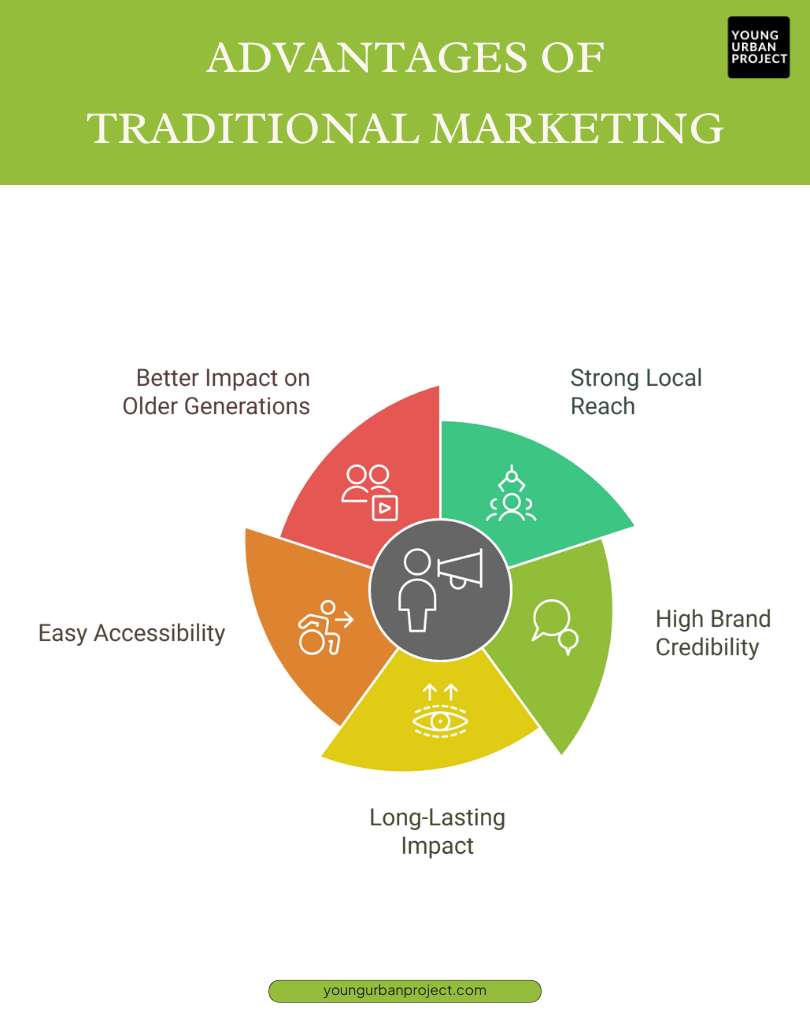
1. Strong Local Reach
Traditional marketing works well for businesses targeting a local audience. A small sweet shop in Mumbai can place an ad in The Times of India to attract nearby customers. Local radio stations also help businesses reach people in a specific city or region, ensuring better visibility within a focused area.
2. High Brand Credibility
People trust brands they see in newspapers, TV, or on billboards. For example, Amul’s advertisements in newspapers and TV have built its reputation over decades. Since traditional media is well-established, appearing in a major publication or TV channel gives a brand more credibility compared to online ads.
3. Long-Lasting Impact
Traditional ads have a lasting effect. A billboard for Tanishq Jewellery on a busy road stays visible for months, ensuring repeated exposure. Unlike digital ads that disappear when the budget runs out, print materials like brochures, magazines, and newspapers remain available for reference.
4. Easy Accessibility
Traditional ads reach people who do not use the internet or smartphones. A television commercial for Dabur Chyawanprash can target elderly audiences who do not engage with digital platforms. Many rural areas still rely on newspapers and radio for daily information, making traditional marketing an effective way to reach them.
5. Better Impact on Older Generations
Older people prefer newspapers, radio, and TV over digital platforms. Brands like Patanjali Ayurved focus on traditional marketing through print and television ads, as their target audience, mainly middle-aged and older consumers, engages more with these media. This ensures better connection and trust among these groups.
Limitations of Traditional Marketing
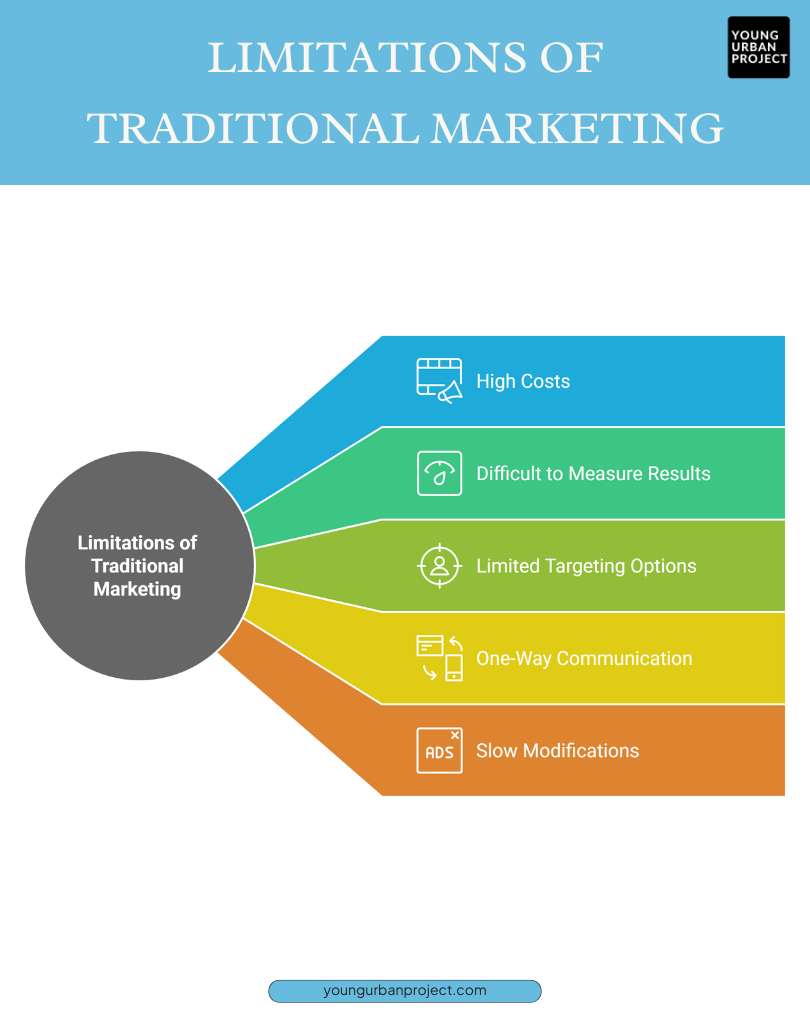
1. High Costs
Running ads on TV, newspapers, or billboards is expensive. A full-page ad in The Hindu can cost lakhs, making it unaffordable for small businesses. Unlike digital marketing, where companies can start advertising with just a few hundred rupees, traditional marketing requires a large budget.
2. Difficult to Measure Results
Traditional marketing does not provide accurate data on how well an ad performed. A clothing brand running a print ad in Hindustan Times will not know how many people saw the ad and actually visited the store. This lack of clear tracking makes it harder to improve future marketing campaigns.
3. Limited Targeting Options
Traditional marketing reaches a broad audience, even if many people are not interested. A billboard for an expensive luxury watch in a busy marketplace will be seen by everyone, including people who cannot afford it. Digital marketing allows businesses to show ads only to potential buyers.
4. One-Way Communication
Unlike social media, traditional ads do not allow direct engagement with customers. A brand running a TV commercial cannot receive instant feedback or answer customer questions. Digital platforms, on the other hand, allow brands to reply to comments, resolve concerns, and build relationships with customers.
5. Slow Modifications
Once a newspaper ad is printed or a TV ad is aired, it cannot be changed. If a company makes a mistake in a print ad, they have to wait until the next edition to correct it. Digital ads, however, can be edited or paused instantly.
Benefits of Digital Marketing
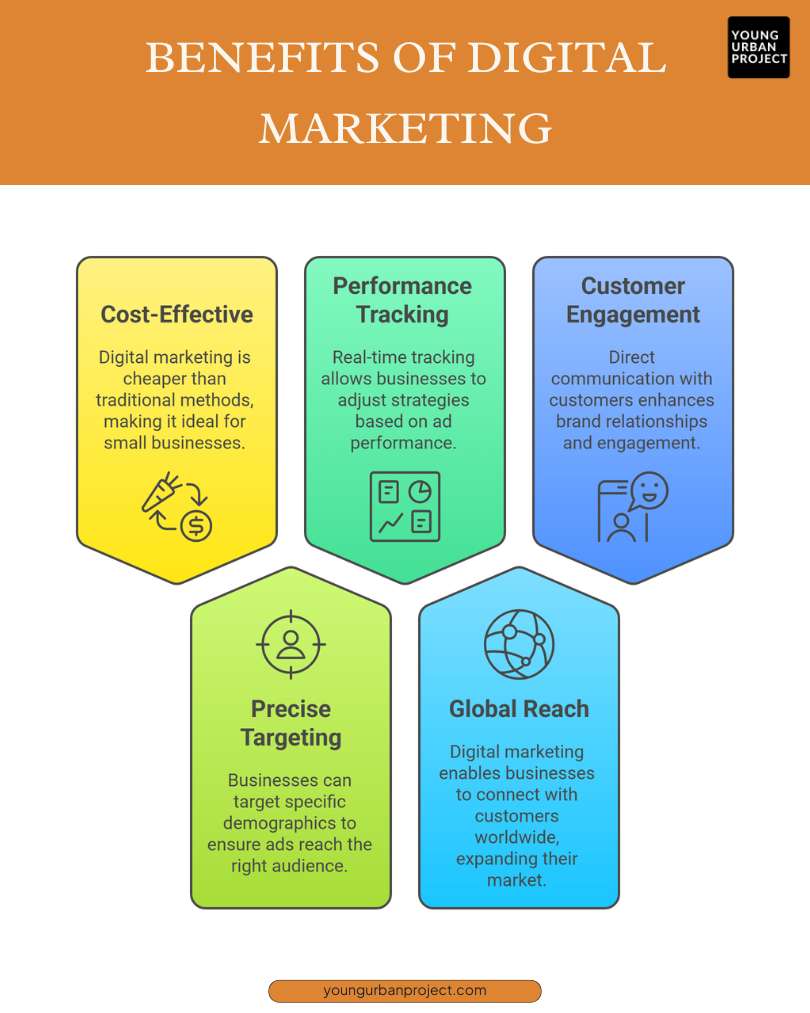
1. Cost-Effective Marketing
Digital marketing is far less expensive than old techniques. A firm selling handcrafted soaps can run Facebook and Instagram advertisements for ₹500 per day, whereas a TV ad costs lakhs. This makes digital marketing suitable for small firms who want to promote their products at a low cost.
2. Precise Targeting
Businesses can use digital marketing to target specific demographics, such as age, location, interests, and behavior. Nykaa, for example, utilizes Facebook advertisements to display beauty products to women aged 18 to 40 who have looked online for skincare or makeup. This guarantees that the adverts reach their intended target.
3. Real-Time Performance Tracking
With digital marketing, businesses can track ad performance instantly. A clothing brand running Google Ads can see how many people clicked on the ad, visited their website, and made a purchase. This helps businesses adjust their strategy and improve results.
4. Global Reach
Digital marketing allows businesses to access clients all over the world. For example, an Indian fashion firm, say FabIndia, can target overseas buyers with Instagram ads. Unlike traditional marketing, which is primarily local, digital platforms enable businesses to go outside their regional limits.
5. Direct Customer Engagement
Digital marketing enables firms to communicate with their customers in real time. Swiggy’s social media team frequently responds to tweets, memes, and customer inquiries, increasing the brand’s engagement. This direct communication enables brands to establish a deep relationship with their audience.
Also read: Advantages of Digital Marketing: Its Benefits In 2025
Challenges of Digital Marketing
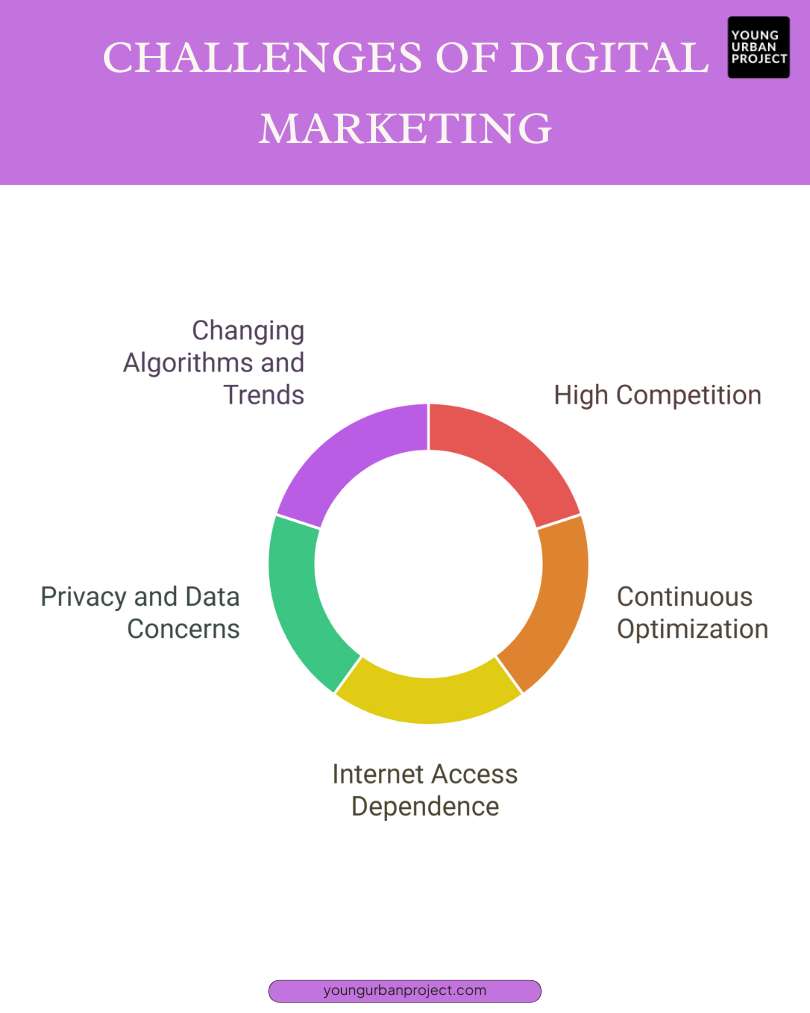
1. High Competition
Since digital marketing is accessible to everyone, competition is intense. For example, in the online shopping space, brands like Flipkart, Amazon, and Myntra compete for customer attention through paid ads and SEO, making it challenging for smaller businesses to stand out.
2. Requires Continuous Optimization
Digital marketing campaigns need regular adjustments. If an Instagram ad is not generating sales, businesses need to change the ad copy, targeting, or budget. Unlike traditional marketing, where an ad runs for a fixed period, digital ads require constant monitoring and optimization.
3. Dependence on Internet Access
Digital marketing is ineffective in areas with poor internet connectivity. For example, rural parts of India with limited smartphone usage may not respond well to online ads. Traditional marketing, like radio and newspapers, works better in such areas.
4. Privacy and Data Concerns
Consumers are increasingly worried about data privacy. WhatsApp faced backlash when it announced new data-sharing policies, leading to many users switching to Signal and Telegram. Brands must ensure ethical data usage to maintain customer trust.
5. Changing Algorithms and Trends
Social media and search engines update their algorithms frequently, affecting digital marketing performance. For example, Instagram’s algorithm changes can reduce a brand’s reach, forcing businesses to spend more on paid promotions. Companies must keep up with these changes to stay relevant.
FAQs: Traditional vs Digital Marketing
1. How are traditional and digital marketing different?
Traditional marketing uses offline methods like TV ads, newspapers, radio, and billboards. Digital marketing uses online tools like websites, social media, emails, and Google Ads. Traditional marketing reaches many people but can’t target specific groups. Digital marketing lets businesses target specific customers, track results, and change campaigns quickly.
2. Why is digital marketing more popular than traditional marketing?
Digital marketing is cheaper, easier to track, and more flexible. Small businesses can start with a small budget. Traditional marketing costs more. Digital marketing also lets businesses reach the right customers and see results fast. With more people using social media and phones, digital marketing is now the top choice for businesses.
3. What are the benefits of traditional marketing?
Traditional marketing builds trust because people know TV, newspapers, and billboards. It works well for local businesses, as newspaper and radio ads reach people nearby. Billboards and print ads stay visible for a long time, helping customers remember the brand.
4. Is traditional marketing still useful today?
Yes, traditional marketing is still helpful, especially for local businesses or older audiences. Many people still watch TV, read newspapers, and listen to the radio. Big companies like Amul and Tanishq still use TV and print ads to build trust. But now, many businesses use both traditional and digital marketing together for better results.
5. What problems do businesses face with digital marketing?
Digital marketing has a lot of competition. Social media and Google rules change often, making it hard to keep up. Creating good content, dealing with bad comments, and keeping data safe are also challenges. Small businesses may not have the skills or money to run good digital campaigns, making it harder to succeed.
6. How can businesses check if digital marketing is working?
Businesses can use tools like Google Analytics and Facebook Insights to track website visits, sales, and engagement. They can look at click rates, conversion rates, and ROI to see how well a campaign is doing. Digital marketing gives real-time data, so businesses can improve their strategies quickly.
7. Does digital marketing work for all businesses?
Yes, digital marketing works for all businesses, big or small. Online stores like Flipkart use ads and social media to sell products. Local shops use WhatsApp and Instagram to attract nearby customers. Even industries like real estate and healthcare use digital marketing to grow their brand. But businesses must pick the right platforms for their audience.

